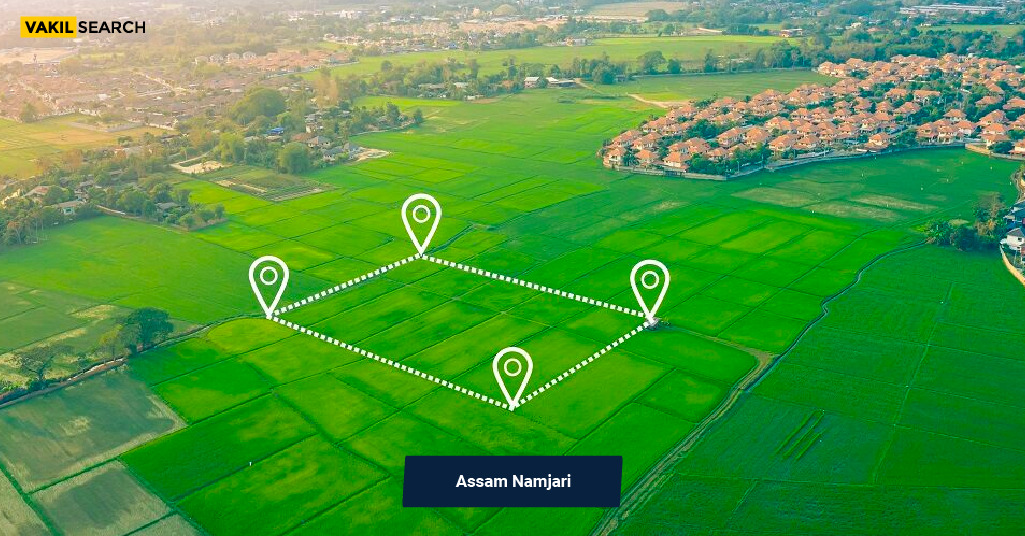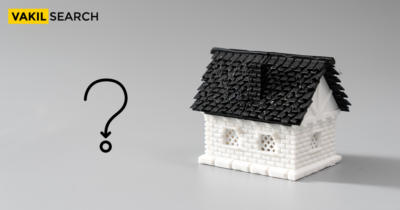Land mutation, or Namjari, is vital in legal land transactions. It involves transferring ownership rights and updating property details in the revenue record.
Importance of Land Mutation
Upon succession or transfer of land, proprietors, landholders, mortgagees are obligated to apply for mutation of their name in the ROR (Jamabandi) as the rightful owner. This process, applicable to various ownership types (proprietor, landholder, manager, mortgagee), can be initiated through sale, mortgage, gift, inheritance, or will. However, mutation for annual patta land is restricted to inheritance.
Mutation documents play a vital role in
- Determining property tax liabilities
- Establishing ownership evidence
- Verifying ownership during property transfers
In the case of joint ownership, the mutation document will reflect the names of all co-owners.
Types Of Land Mutation In Assam
Land mutation refers to the process of updating land records to reflect a change in ownership or possession. In Assam, there are two main types of land mutation:
-
Office Mutation
- This is the most common type of mutation and is done through the office of the Circle Officer or Deputy Commissioner.
- It can be initiated for various reasons, including:
- Sale of land
- Gift of land
- Inheritance of land
- Mortgage of land
- Cancellation of a mortgage
- Partition of land
- The process involves submitting an application with supporting documents, such as the sale deed, gift deed, inheritance certificate, or mortgage deed.
- Once the application is approved, the Circle Officer or Deputy Commissioner will update the land records to reflect the new owner or possessor.
-
Field Mutation
- This type of mutation is less common and is usually done in rural areas.
- It involves a physical inspection of the land by the Circle Officer or Lot Mandal to verify the change in ownership or possession.
- The process is similar to office mutation, but it may take longer due to the need for a field visit.
- Conversion from AnuualPatta to Periodic Patta: This process changes the status of land settled for one year (Annual Patta) to a longer tenure (Periodic Patta), giving the owner permanent, heritable, and transferable rights.
- Partition of Land: This type of mutation divides a piece of land into smaller pieces, each with its own owner.
Documents Needed For Land Mutation
The documents needed for land mutation in Assam can vary depending on the type of mutation and the reason for it. However, some general documents are required for all types of mutations, including:
- Application Form: You can obtain the relevant application form from the office of the Circle Officer or Deputy Commissioner.
- Proof of Identity: You will need to provide photocopies of your valid identity documents, such as your Aadhaar card, PAN card, or voter ID card.
- Proof of Address: You will also need to provide proof of your address, such as your ration card, utility bill, or bank statement.
- Documents Relating to the Land: Depending on the reason for the mutation, you will need to provide different documents relating to the land. For example, if you are applying for mutation due to a sale, you will need to provide a copy of the registered sale deed. If you are applying for mutation due to inheritance, you will need to provide a copy of the death certificate and inheritance certificate.
Here is a more detailed breakdown of the documents needed for some common types of land mutations in Assam:
Mutation by Sale
- Registered sale deed
- Up-to-date land revenue receipt
- Declaration stating that the applicant does not possess land in excess of the ceiling limit laid down under the Assam Fixation of Ceiling on Land Holding Act, 1956
- Copy of updated Khazana receipt
- Affidavit swearing that the Applicant/Applicants is/are the son/daughter/wife/legal heirs of the deceased pattadar
- Affidavit swearing that the Applicant/Applicants have not transferred the property to anyone earlier nor mortgaged/nor created any charge over the property to be mutated
- Proof of death of the deceased Pattadar in whose place Mutation (Registration) is sought
- Affidavit swearing that the person to whom the Applicants applied as successor had not transferred the property during his/her lifetime
- Copy of NOC obtained from D.C. in case of transfer of land
Mutation by Gift
- Registered gift deed
- Up-to-date land revenue receipt
- Declaration stating that the applicant does not possess land in excess of the ceiling limit laid down under the Assam Fixation of Ceiling on Land Holding Act, 1956
- Copy of updated Khazana receipt
- Affidavit swearing that the Applicant/Applicants is/are the son/daughter/wife/legal heirs of the deceased pattadar
Mutation by Inheritance
- Death certificate of the deceased pattadar
- Next of kin certificate
- Probate from competent court in case of a will
- Affidavit mentioning the relationship of the applicant with the deceased pattadar
- Declaration in the form of an affidavit that the land intended to be mutated in place of the deceased pattadar has not been transferred when he/she was alive
- Declaration in the form of an affidavit that the total land of the applicant does not exceed the ceiling limit as per the Assam Fixation of Ceiling on Land Holding Act, 1956 after mutation
- Up-to-date land revenue receipt
How To Apply For Office Mutation In Assam?
Applying for Office Mutation in Assam
Here’s how you can apply for office mutation in Assam
-
Collect Documents
- Application Form: Obtain the form from the Circle Officer or Deputy Commissioner’s office.
- Proof of Identity: Aadhaar card, PAN card, voter ID card (photocopies).
- Proof of Address: Ration card, utility bill, bank statement (photocopies).
- Documents Relating to Land:
- Sale: Registered sale deed, up-to-date land revenue & Khazana recipes, declaration not exceeding land ceiling limit, affidavit on absence of previous transfers, etc.
- Gift: Registered gift deed, similar documents as sale.
- Inheritance: Death certificate, next-of-kin certificate, probate (if applicable), affidavit on relationship, non-transfer during deceased’s lifetime, land ceiling declaration, etc.
- Other documents: Depending on the specific reason for mutation, additional documents may be required.
-
Submit Application
- Once you have all the required documents, submit the application form and supporting documents to the Circle Officer or Deputy Commissioner’s office responsible for your land area.
- Pay the necessary fees, which can vary depending on the type of mutation and location.
-
Verification and Hearing
- The office will verify your documents and may schedule a hearing if necessary.
- Attend the hearing if required and address any queries or concerns.
-
Decision and Certificate
- After verification and any hearings, the office will issue a decision on your application.
- If approved, you will receive a mutation certificate, which serves as legal proof of your updated ownership or possession.
How To Check The Status Of Land Mutation Application In Assam?
There are two main ways to check the status of your land mutation application in Assam:
-
Offline
- Visit the Circle Officer or Deputy Commissioner’s office responsible for your land area.
- Inquire about your application status with the relevant officer or personnel.
-
Online
- The Assam government is currently developing an online system for tracking land mutation applications. However, at present, online tracking might not be fully functional.
- You can try visiting the websites of the Directorate of Land Records and Survey (http://dlrar.assam.gov.in/) or the Revenue and Disaster Management Department (https://landrevenue.assam.gov.in/) to see if online tracking is available for your specific area.
- Alternatively, you can call the department’s helpline or contact them through email for information on application status.
Status of Application
To inquire about the mutation application status, access the GMC portal. Navigate to the menu, select Track Application Status, input the mutation application number and captcha code, and view the application status. If approved, print the mutation document using the provided option.
FAQs on Assam Namjari
How to apply for Namjari in Assam?
There are two main types of Namjari applications in Assam:
Office Mutation: This applies to urban areas and involves submitting an application with supporting documents to the Circle Officer or Deputy Commissioner. The documents vary depending on the reason for mutation (sale, inheritance, gift, etc.). You can find a detailed list on the website of the Directorate of Land Records and Survey, Assam: http://dlrar.assam.gov.in/.
Field Mutation: This applies to rural areas and usually involves a physical inspection of the land by the Circle Officer or Lot Mandal. The application process is similar to office mutation, but a field visit adds additional time.
What is the cost of Namjari in Assam?
The cost of Namjari in Assam depends on several factors, including the type of mutation, the area of land, and the court fees applicable. It can range from a few hundred rupees to several thousand. You can inquire about the specific fees at the Circle Officer or Deputy Commissioner's office.
What is the mutation rule in Assam?
Mutation rules in Assam specify the documentation and procedures required to update land records upon a change in ownership or possession. These rules vary depending on the type of mutation (office/field) and the reason for it (sale, inheritance, gift, etc.). You can find detailed information on the website of the Directorate of Land Records and Survey, Assam: http://dlrar.assam.gov.in/.
How can I get a mutation certificate in Assam?
You will receive a mutation certificate after your Namjari application is approved. This certificate serves as legal proof of your updated ownership or possession of the land. You can collect it from the Circle Officer or Deputy Commissioner's office after the mutation process is complete.
How can I check my mutation status in Assam?
There are two main ways to check your Namjari application status:
Offline: Visit the Circle Officer or Deputy Commissioner's office responsible for your land area and inquire about your application status with the relevant personnel.
Online: The Assam government is developing an online system for tracking land mutation applications. However, it might not be fully functional in all areas yet. You can try visiting the websites of the Directorate of Land Records and Survey (http://dlrar.assam.gov.in/) or the Revenue and Disaster Management Department (https://revenueassam.nic.in/) to see if online tracking is available for your specific area. Alternatively, you can call the department's helpline or contact them through email for information on application status.
Also, Read:










